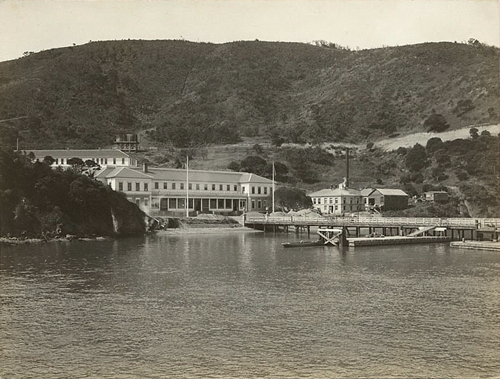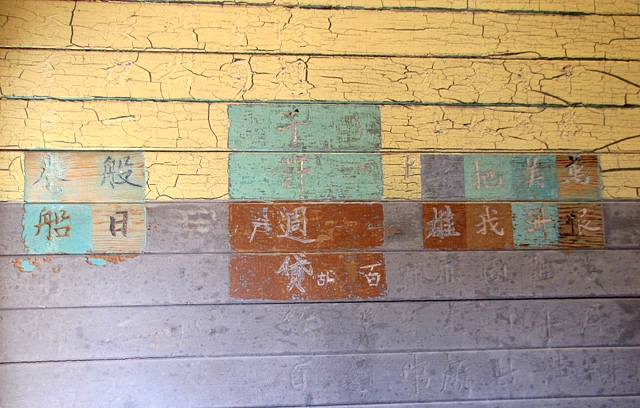It’s impossible to explore the whole of Angel Island in one trip as the various sites like Camp Reynolds, Fort McDowell and the Immigration Station require time and study. For our anniversary, we explored Camp Reynolds. This time, we went to the Immigration Station and visited the museum. We also managed to hike all the way around the island via Perimeter Road, but I’ll post those pics later.

The station has been called “The Ellis Island of the West”, but as stated in the virtual tour video (near the end of the post) it’s a sad comparison. Most immigrants going through Ellis Island typically spent only a few hours there and were welcomed. The Angel Island Immigration Station, on the other hand, was built to enforce the Chinese Exclusion Act and there was nothing welcoming about it. Today it serves as a sad reminder of racism and bigotry, much of which still remains in our country.
I’ll post some of the photos here with commentary. The rest will be in a slideshow at the bottom.
Immigrants were held on the island for two weeks to two years depending on appeals. While the station received peoples from all over, the Chinese were the ones who were usually detained the longest. In addition to cramped quarters and long stays, they endured tense interrogations. Many of those same immigrants carved poetry into the walls of the barracks that expressed their hopes and sorrows.

The carvings were everywhere, though not all had translations to go with them.
The carving in the photo below had a description and a translation. According to the museum:
In the first of these two poems, which are meant to be read as a pair, the author refers to a 1921 Mexican law barring immigration of Chinese laborers as the cause of his current fate. Yet he vows to fight his detention. His defiance of the authorities is suggested by his reference to General Zu Di, who defended China around 300 A.D. The second poem describes the successful conclusion of the author’s case. The elegant writing and the references indicate that he was likely an educated man.
Translation:
Detained in this wooden house for several tens of days,
It is all because of the Mexican exclusion law which implicates me.
It’s a pity heroes have no way of exercising their prowess.
I can only await the word so that I can snap Zu’s whip.From now on, I am departing far from this building.
All of my fellow villagers are rejoicing with me.
Don’t say that everything within is Western styled.
Even if it is built of jade, it has turned into a cage.
The Europeans that were housed there were certainly treated better. They had mattresses on their bunks. The Chinese men did not as it was assumed (wrongly) that they weren’t used to sleeping on mattresses. In addition, the play yard for the European immigrants was much larger than the one for the Asians. I didn’t take a photo of the smaller yard as it was undergoing major pipe repair and it was all torn up.
One bright moment. We were in the women’s barracks when we heard a plaintive chirping and saw a sparrow flying from one window to another trying to get out. I went back out to the front and notified the ranger who came immediately to rescue the little birdie.


Here is a slide show with the rest of the photos.
Here is a very good virtual tour of the barracks.
In this video, Tyrus Wong, who later went on to become an animator at Disney, talks about his stay at the Station when he was a child.
Our other posts about Angel Island can be found here.

































One Reply to “Numbered, Weighed, Divided: The Angel Island Immigration Station”